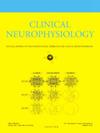Investigation of lateralized periodic discharge features associated with epileptogenesis
IF 3.7
3区 医学
Q1 CLINICAL NEUROLOGY
引用次数: 0
Abstract
Objective
To identify factors, especially the electrographic features, that predispose patients with lateralized periodic discharges (LPDs) to epilepsy development.
Methods
We included adults, without epilepsy history, who had LPDs on continuous EEG (cEEG) monitoring during hospitalization. We characterized LPDs based on American Clinical Neurophysiology Society rhythmic and periodic pattern modifiers. The outcome variable was epilepsy development as defined by clinical seizure after discharge. We used a Cox regression model to calculate adjusted hazard ratios (aHR) for epilepsy development.
Results
Of 174 patients, 52 (30 %) developed epilepsy during a median follow-up time of 15.0 (IQR 62.1) months. We found that an LPD-plus pattern was associated with an increased risk of epilepsy development during the follow-up period [aHR 2.67 (95 %CI 1.26–5.64)]. We also found that LPD frequency ≥ 1.5 Hz was associated with an increased risk of epilepsy development during the first year of follow-up [aHR 2.27 (95 %CI 1.02–5.05)].
Conclusions
Among patients with LPDs, the presence of a plus pattern and discharge frequency ≥ 1.5 Hz are both independently associated with more than two-times increased risk of epilepsy development.
Significance
Identification of EEG-based predictors of epileptogenesis in patients with LPDs can help early identification of patients at higher risk for future seizures and help tailor their management.
求助全文
约1分钟内获得全文
求助全文
来源期刊

Clinical Neurophysiology
医学-临床神经学
CiteScore
8.70
自引率
6.40%
发文量
932
审稿时长
59 days
期刊介绍:
As of January 1999, The journal Electroencephalography and Clinical Neurophysiology, and its two sections Electromyography and Motor Control and Evoked Potentials have amalgamated to become this journal - Clinical Neurophysiology.
Clinical Neurophysiology is the official journal of the International Federation of Clinical Neurophysiology, the Brazilian Society of Clinical Neurophysiology, the Czech Society of Clinical Neurophysiology, the Italian Clinical Neurophysiology Society and the International Society of Intraoperative Neurophysiology.The journal is dedicated to fostering research and disseminating information on all aspects of both normal and abnormal functioning of the nervous system. The key aim of the publication is to disseminate scholarly reports on the pathophysiology underlying diseases of the central and peripheral nervous system of human patients. Clinical trials that use neurophysiological measures to document change are encouraged, as are manuscripts reporting data on integrated neuroimaging of central nervous function including, but not limited to, functional MRI, MEG, EEG, PET and other neuroimaging modalities.
 求助内容:
求助内容: 应助结果提醒方式:
应助结果提醒方式:


